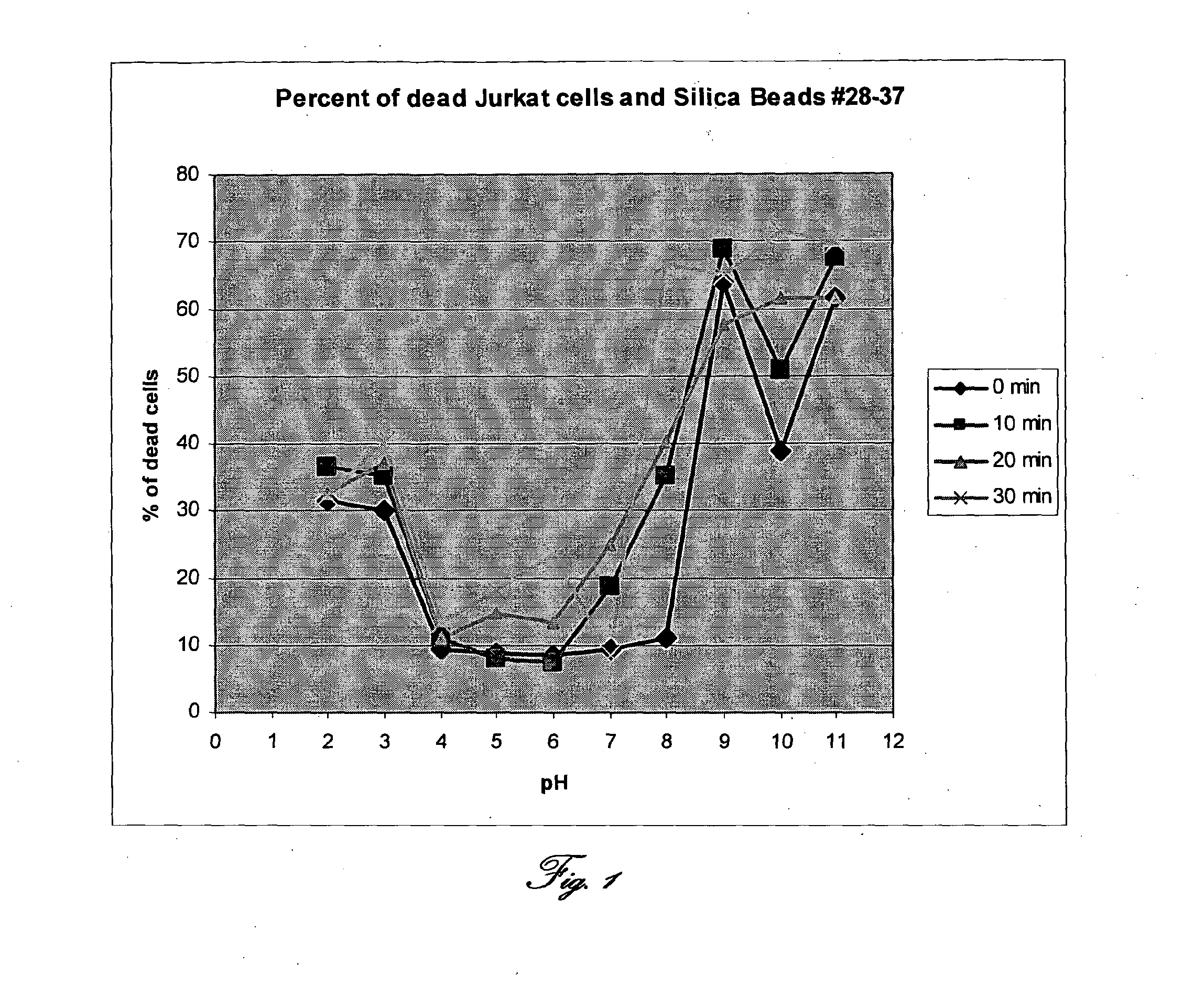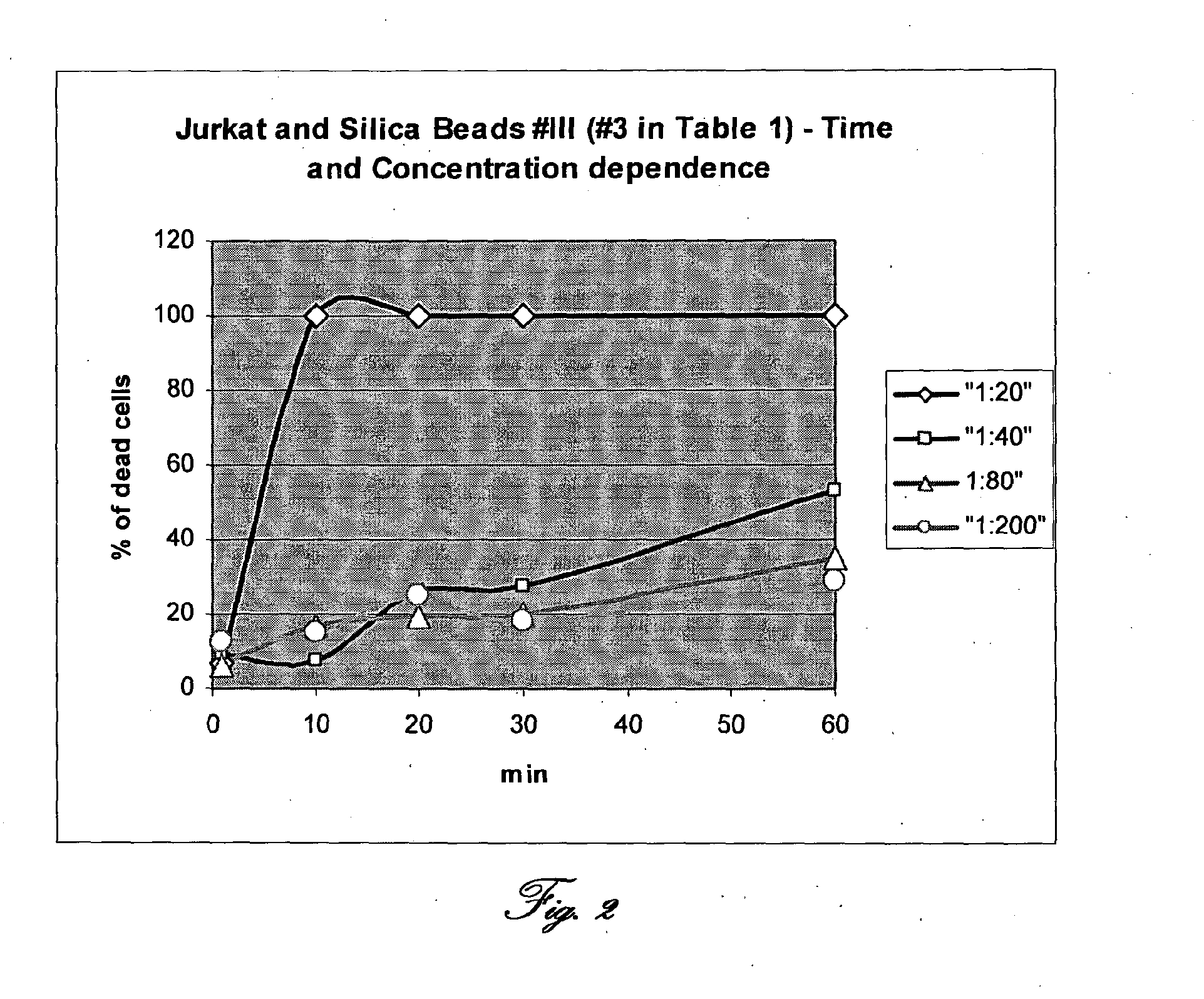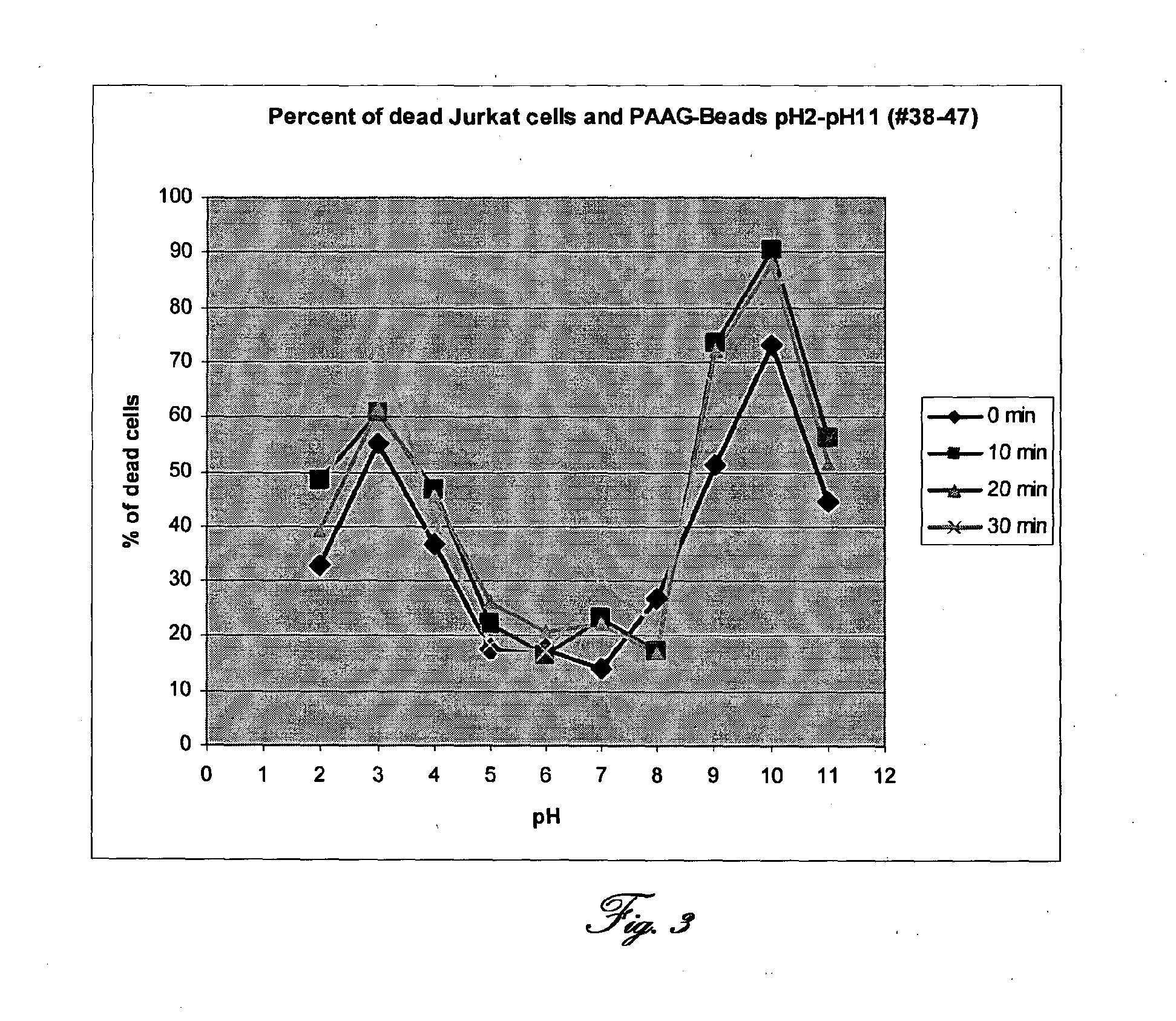New compositions and methods for cell killing
a cell and composition technology, applied in the field of cell compositions and methods, can solve the problems of severe disease symptoms, ltc resistance, and cellular material invariability to be harmful and potentially lethal to man, and achieve the effects of effectively disrupting the ph homeostasis and/or electrical balance of the ltc, avoiding the development of ltc resistance, and efficiently preserving the ph of the ltc's environmen
- Summary
- Abstract
- Description
- Claims
- Application Information
AI Technical Summary
Benefits of technology
Problems solved by technology
Method used
Image
Examples
example 1
[0111]Cytotoxic Effect of Polyacrylamide Gel (PAAG)-Coated and Uncoated Silica Beads on Jurkat Cells
[0112]Materials and Methods
[0113]Uncoated Silica beads (˜40 nm size, Sigma, cat.#421553) in suspension and silica beads coated by photpolymerization with polyacrylamide incorporating acidic and basic acrylamido derivatives (immobilines) were stored in refrigerator +4° C. until used.
[0114]The acute T-cell leukemia Jurkat cell line, clone E6-1 (ATCC number TIB-152), was used. Jurkat cells were maintained in RPMI-1640 medium supplemented by 1 mmol sodium pyruvate, 10% FBS and penicillin-streptomycin-amphotericin (1:100).
[0115]Viability and Microscopic Observation
[0116]2 μl of beads (dilute with a 0.1% SDS solution) were added to 106 Jurkat cells in 25 μl of PBS. Live / Dead Dye (LIVE-DEAD Viability Kit, Molecular Probes) was added (0.15 μl) and incubation was performed at room temperature. Cell morphology and viability was examined using a fluorescent microscope (Axioskop 2 plus; filter 4-...
example 2
[0126]Cytotoxic Effect of PAAG Beads on Jurkat Cells
[0127]Materials and Methods
[0128]PAAG beads incorporating immobilines (size ˜500 nm) at various pH were prepared by standard emulsification techniques. Stock solutions were stored in refrigerator +4° C. until used.
[0129]The acute T-cell leukemia Jurkat cell line, clone E6-1 (ATCC number TIB-152), was used. Jurkat cells were maintained in RPMI-1640 medium supplemented by 1 mmol sodium pyruvate, 10% FBS and penicillin-streptomycin-amphotericin (1:100).
[0130]Viability and Microscopic Observation
[0131]2 μl of beads (dilute with a 0.1% SDS solution) were added to 106 Jurkat cells in 25 μl of PBS. Live / Dead Dye (LIVE-DEAD Viability Kit, Molecular Probes) was added (0.15 μl) and incubation was performed at room temperature. Cell morphology and viability was examined using a fluorescent microscope (Axioskop 2 plus; filter 4-3).
[0132]Results
[0133]Microscopic observations of PAAG-beads-treated Jurkat cells were performed using Molecular Prob...
example 3
[0138]The Cytotoxic Effect of Two Amberlite™ Beads CG-120-I and CG-400-II on Jurkat Cells
[0139]Material and Methods
[0140]Two Amberlite™ Beads CG-120-I and CG-400-II were tested for their effect on Jurkat cells: Amberlite™ CG-120-II (Fluka, 06469), strongly acidic gel-type resin with sulfonic acid functionality Na+ form, 200-400 mesh; and Amberlite™ CG-400-II (Fluka, 06471), strongly basic gel-type resin, quaternary ammonium functionality, Cl− form, 200-400 mesh. 0.15 μl of the dye mixture (Molecular Probes' LIVE / DEAD Viability Kit) were added to 20 μl of Jurkat cells in PBS (5×105 cells). 5 μl of Amberlite™ Beads in. PBS (5×105 beads) were then added to the cells suspension. 7 μl stained cell suspension were immediately transferred to a picroscope slide and covered with a cover slip. Live and dead Jurkat cells were measured in a fluorescence microscope using 4-3 green filter.
[0141]Results
[0142]It was shown that there are no practical differences between Control and the two Amberlite...
PUM
| Property | Measurement | Unit |
|---|---|---|
| size | aaaaa | aaaaa |
| size | aaaaa | aaaaa |
| time | aaaaa | aaaaa |
Abstract
Description
Claims
Application Information
 Login to View More
Login to View More - R&D
- Intellectual Property
- Life Sciences
- Materials
- Tech Scout
- Unparalleled Data Quality
- Higher Quality Content
- 60% Fewer Hallucinations
Browse by: Latest US Patents, China's latest patents, Technical Efficacy Thesaurus, Application Domain, Technology Topic, Popular Technical Reports.
© 2025 PatSnap. All rights reserved.Legal|Privacy policy|Modern Slavery Act Transparency Statement|Sitemap|About US| Contact US: help@patsnap.com



